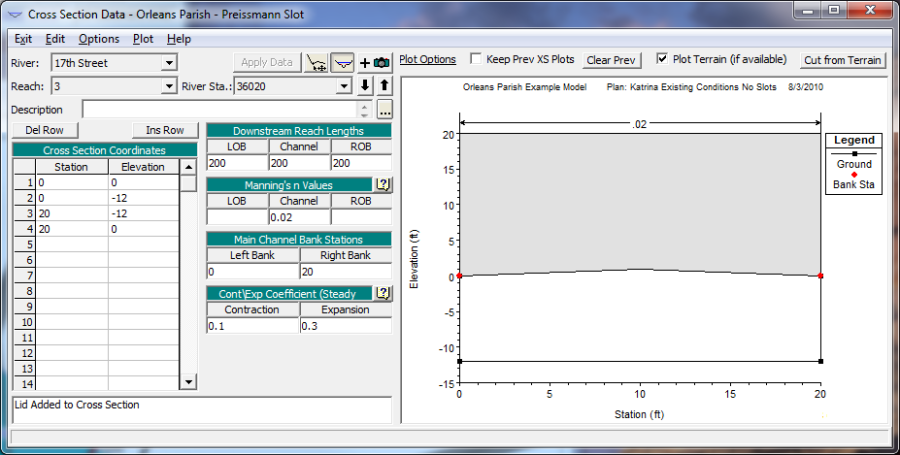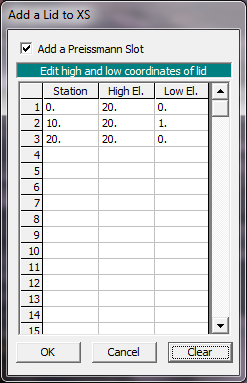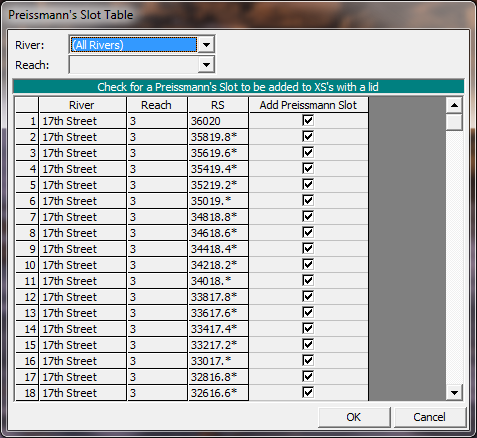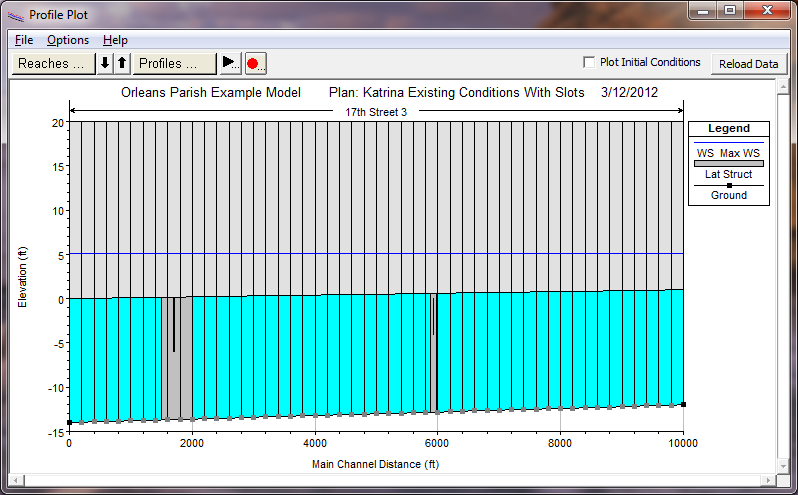HEC-RAS can be used to model pressurized pipe flow during unsteady flow calculations. This is accomplished by using the Preissmann slot theory applied to the open channel flow equations. To model pressure flow with HEC-RAS, the user must use cross sections with a Lid option. The cross section is entered as the bottom half of the pipe and the Lid is entered as the top half of the pipe. Any shape pipe can be modeled, however, the details of the pipe shape will depend on how many points the user puts in for the bottom (cross section) and the top (Lid). An example of adding a lid to a cross section is shown in Figure 14-36.
NOTE: This option only works with the 1D Finite Difference solution scheme. This option does not work with the 1D Finite Volume solution scheme.

Figure 14 36. Cross Section with the Lid Option entered.
To enter a Lid at a cross section, select Add a Lid to XS from the Options menu on the Cross Section editor. When this option is selected, a window will appear as shown in Figure 14-37.

Figure 14 37. Cross Section Lid Editor
Additionally, the user must instruct the program to use the Preissmann Slot option for that particular cross section. The Preissmann Slot option can be turned on for an individual cross section from the Cross Section Lid Editor by checking the box at the top of the editor. The user can also bring up a table that will show all of the locations where cross sections with lids exist. This table can be viewed by selecting Preissmann's Slot on Lidded XS's from the Tables menu on the Geometric Data Editor. When this option is selected, a window will appear as shown in Figure 14-38.

Figure 14 38. Preissmann Slot Table for Cross Sections with Lid's.
The Preissmann Slot table will show all cross section locations that contain lids. The user can turn on or off the Preissmann slot option by simply checking the box next to the desired cross section location. All of the check boxes can be turned on or off simultaneously by clicking on the Add Preissmann Slot column heading at the top of the table.
In general, lids can be added to any cross section in the HEC-RAS model. Several cross sections in succession with lids can be used to represent a pipe. Multiple interconnected pipes can be modeled. Lidded cross sections can be used around stream junctions to represent pressurized junctions. However, HEC-RAS does not compute minor losses at junctions, bends, or where pipes change size. This is currently a limitation in modeling pressurized pipe flow with HEC-RAS. Lateral flows can be modeled by either using lateral structures with culverts, or by directly inputting hydrographs as lateral flow boundary conditions. The lateral structure option can be used to mimic drop inlets connecting the surface flow to the pipe. An example of a pressurized pipe with lateral structures connected to the surface is shown in Figure 14-39.

Figure 14 39. Example Pressurized Pipe modeled with Cross Sections and Lids.
For the computational details of how the Preissmann slot option works, please see the section on modeling pressurized pipes in the Hydraulic Reference Manual.